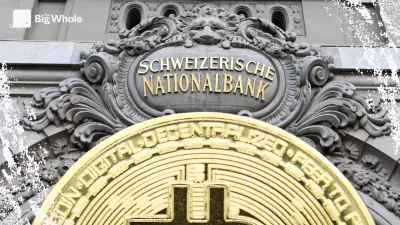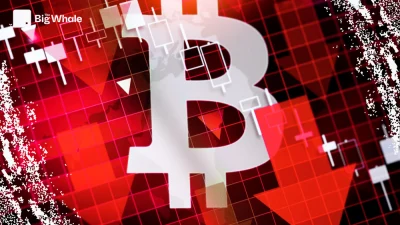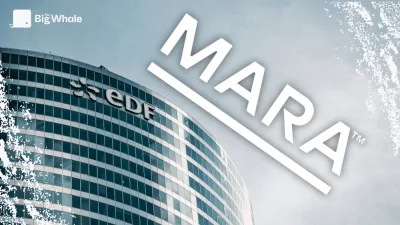TBW - Analysis: Linea aims to win over DeFi with community-based tokenomics

What you need to know before you start
Linea is a layer 2 of Ethereum that relies on a different approach to establish itself in an already dense market. Its positioning is based on four pillars: direct alignment with Ethereum, tokenomics designed for its users, privileged integration with Metamask and the prospect of significant liquidity thanks to the potential deployment of ETH held by Sharplink Gaming.
Linea's objective is clear: to become a benchmark infrastructure for decentralised finance. To achieve this, the network is banking on a targeted incentive programme designed to accelerate the development of key applications.
Among them, Etherex, its native decentralised exchange, occupies a strategic position and could serve as a showcase to attract developers, investors and users.
General presentation
Linea is an Ethereum zk-rollup, a layer 2 that inherits the security of its layer 1 thanks to cryptographic proofs.
Launched in July 2023, it is being developed by Consensys, the company founded by Joseph Lubin, co-creator of Ethereum and also responsible for Metamask, one of the most widely used wallets in the crypto ecosystem (more than 30 million users).
Linea's aim is to offer an infrastructure capable of combining customisation, high transaction throughput and low costs, while remaining rooted in Ethereum's security and network effect.
Compatible with the Ethereum Virtual Machine (EVM), Linea enables almost all existing applications to be deployed without any changes to their code.
This compatibility facilitates the work of developers and reduces friction for projects wishing to migrate or launch directly on the network. Beyond this technical dimension, Linea wants to introduce a novel model: all ETH transferred to the network would be automatically placed in liquid staking via Lido V3.
In contrast to Blast, which paid these returns directly to users, Linea plans to centralise them in a fund intended to support certain strategic DeFi applications.
This mechanism aims to create a continuous source of revenue fed back into the ecosystem to stimulate growth.
Sharplink, an Ethereum-focused treasury company also run by Joseph Lubin, could play a key role in this dynamic. Its capitalisation has already reached $2.2 billion and could massively feed Linea's liquidity as it makes further ETH purchases.
If this strategy is confirmed, Linea could quickly become one of the largest layer 2s by deposited value (TVL), while it currently has around $160 million in TVL (compared with $4.3 billion for Base, the L2 leader).
To avoid the scenario seen with other layers 2s whose activity plummeted after their airdrop, Linea has repeatedly postponed its token launch in order to refine its model.
The breakdown announced is marked by a strong community focus: 85% of the tokens will be allocated to users and the development of the ecosystem, while Consensys will retain only 15%.
No tokens have been reserved for private investors or advisers.
Linea's business model is distinguished by its dual burn mechanics: 80% of the network's profits will be used to redeem and destroy Linea tokens, while 20% will be used to burn ETH, reinforcing its alignment with Ethereum.
Functioning
Rollups represent the most secure layer 2 category as they publish their entire transaction data on Ethereum. This approach guarantees users the ability to withdraw their funds to layer 1, even in the event of a widespread censorship attempt on the network.
Within this family, zk-rollups are distinguished by their ability to regularly publish cryptographic proofs attesting to the integrity of transactions. This mechanism makes it possible to transfer funds to Ethereum in just a few hours via their native bridge, compared with seven days for optimistic rollups.
However, it is still possible to use third-party bridges, which offer near-instantaneous transfers. These solutions are all the more effective with zk-rollups as their operators can rebalance their liquidity between chains much more quickly.
One of the main technical challenges lies in the difficulty of "proving" the Ethereum Virtual Machine (EVM).
Most zk-rolls get around this by adopting alternative architectures, such as RISC-V, where the EVM is rewritten or emulated to make proof generation easier.
Linea takes a different approach: it directly proves the validity of the EVM. This reduces complexity and the attack surface, while providing a more robust security framework that is faithful to Ethereum's architecture.
>> Layers 2 Ethereum: state of play and challenges
Financing
Consensys, the company behind Linea, has raised a total of $725 million in five funding rounds. Its latest valuation was $7 billion. Its investors include leading players from both the crypto sector, such as Dragonfly and Coinbase Ventures, and traditional finance, including BlackRock, JP Morgan, Mastercard and UBS.
One notable point concerns the absence of any specific allocation of Linea's token to these investors. This choice avoids excessive dilution and preserves the distribution structure geared towards users and the network ecosystem.
Team
Joseph Lubin, CEO of Consensys, has a degree in computer engineering from Princeton University. Before co-founding Ethereum and then creating Consensys, he worked in robotics and held the position of vice-president of technology at Goldman Sachs.
Declan Fox, appointed head of Linea in April 2025 after serving as product manager, has a degree in engineering from Cardiff University. He is now driving Linea's strategy and development, with the aim of strengthening its alignment with Ethereum and accelerating adoption of the network.
>> Interview - Declan Fox: "Linea wants to reconcile L2s with Ethereum"
Community
Linea benefits from an already large community with 1.3 million followers on X and 400,000 members on Discord. This community base is an essential lever for attracting developers, users and projects to the Layer 2 ecosystem.
The LINEA token
The distribution of Linea's token is largely geared towards the community and the development of its ecosystem. Of the total offering, 85% is dedicated to the ecosystem, including 10% for the initial airdrop. The remaining 15% is allocated to Consensys, with a five-year lock-in period.
This model contrasts with many other projects where private investors capture between 20% and 35% of the total offering.
The absence of such investors, combined with Consensys' limited and long-locked allocation, allows Linea to mobilise almost all of its tokens to drive the growth of its network.
In addition, tokenomics incorporates a clear value creation mechanism: 80% of profits from transaction fees will be used to buy back and destroy Linea tokens, thereby reducing their available supply on the market.
Business model and governance
Linea's business model is similar to that of most layer 2s: transaction fees are used in part to publish data on Ethereum, with the remainder making up the network's profits. Over the past 30 days, these profits have amounted to around $130,000.
Linea's technology is entirely open source, which allows anyone to reuse or modify its code, including for commercial purposes. Several projects, such as Ethereum Name Service or Status, are already planning to launch their own blockchains using Linea's stack, which could boost its spread.
If this trend is confirmed, Consensys could explore complementary monetisation solutions, particularly around interoperability between chains built on its infrastructure.
It is important to note that, since all profits from fees will be used to buy back and burn LINEA and ETH tokens, the project will have no margin to reinvest its revenues directly in its growth. Its development will therefore continue to be financed by Consensys, which has a substantial cash position.
Linea's governance is based on a consortium comprising Consensys, Sharplink, EigenLabs, ENS Labs and Status. This structure aims to combine a degree of decentralisation with the ability to act quickly.
It could, if necessary, evolve the revenue usage policy to adapt to the needs of the ecosystem.
Partnerships and ecosystem
Linea benefits from a strategic partnership with Metamask, both developed by Consensys. This integration is set to play a key role in the adoption of the network: Metamask's future payment card will require users' funds to be deposited on Linea in order to function. This synergy could be a major driver for the growth of the layer 2 user base.
Another potential element of support for Linea lies in its proximity to Sharplink, the treasury company also run by Joseph Lubin. Although no official announcement has been made, this relationship could result in Sharplink's funds being raised on Linea, providing the network with a significant flow of liquidity and boosting its attractiveness to DeFi application developers.
>> Sharplink, the armed wing of Consensys and Linea
Despite these assets, Linea has so far encountered difficulties in bringing out truly differentiating applications. At this stage, Zerolend is the dominant protocol in terms of Total Locked Value (TVL). Based on Aave V3, it offers several instances, including two specialising in CROAK and FOXY memecoins. Aave itself ranks second on the network, confirming the central role of lending in Linea's ecosystem.
On the decentralised trading side, Lynex is currently Linea's largest DEX. It is based on the ve(3,3) model, popularised by Ramses V3 and Velodrome, where liquidity providers are remunerated exclusively in native tokens, while the holders of these tokens receive trading fees and influence the allocation of incentives.
Etherex, launched on 28 July, is announced as Linea's future main DEX. The result of collaboration between Linea and Nile Exchange teams, it will adopt a model close to ve(3,3) while removing the long-term lock-in constraint to access protocol revenues.
>> DeFi sur Ethereum : État des lieux et perspectives
The distribution of REX tokens is planned as follows: 25% for Linea, 25% for NILE holders (the snapshot has already been taken), 40% for the treasury, 5% for CEX and market makers, and 5% for Linea ecosystem partners.
Beyond traditional DeFi, Linea is also seeing the arrival of several innovative projects.
Theo is a tokenisation protocol that provides access to returns from Treasury bonds or strategies such as the basis trade popularised by Ethena.
Deri, an options trading protocol present on a dozen blockchains, is also deployed there.
Finally, Myriad, a predictive markets platform initially launched on Abstract, has announced its forthcoming deployment on Linea, in partnership with the Decrypt and Rug Radio media.
Limits and risks
Linea launched two years ago and has been going through a period of slowdown since the end of its airdrop campaign.
This campaign initially boosted activity on the network by encouraging users to participate in various quests and deposit cash.
But since the incentive programme was discontinued in October 2024, Linea's total locked-in value (TVL) has steadily declined, reflecting a difficulty in maintaining an organic level of activity.

Despite its direct link with Metamask, Linea has not benefited from significant promotion via the wallet.
The wallet, once the undisputed leader, has lost momentum to alternatives such as Rabby, which are more modern and better integrated with current usage. This situation reduces the leverage effect that Linea's native integration into Metamask could have represented.
Also, the decision to push Etherex as the network's official DEX could discourage the arrival of competing applications and limit the diversity of the ecosystem, a risk that could prove counterproductive in the long term.
Regulatory compliance
The Linea consortium is structured as a not-for-profit entity registered in the State of Delaware. For the time being, there is no specific regulation aimed directly at layers 2, but Linea's legal status may have to evolve as the regulatory framework around blockchains becomes clearer.
This uncertainty remains something to keep an eye on, particularly for institutional investors who prefer clear regulatory environments.
Competition
Linea must assert itself in a particularly competitive layers 2 market. Base, backed by Coinbase, dominates with nearly $4.3 billion in TVL, thanks to the distribution power of the US exchange. Arbitrum follows with around $2.9 billion and benefits from its long history and a rich DeFi ecosystem that continues to attract new applications.
>> Base: Analysis of the L2 developed by Coinbase
>> Arbitrum (ARB) : Analysis of the L2 pioneer
Unichain, with $1bn in TVL, has seen strong growth fuelled mainly by an incentive programme whose sustainability remains uncertain.
>> Unichain: Is Ethereum under threat if its big projects launch L2s?
Compared to these players, Linea currently has a TVL of around $160 million, making it the largest zk-rollup.
However, it also has to contend with other zk-rollups such as ZKsync Era, which relies on a multichain approach, or Starknet, whose use of the proprietary Cairo language is holding back its adoption. In this environment, Linea will need to find a differentiating positioning to make a lasting impact.
Roadmap
Linea plans to continue optimising its technical performance.
The network currently has a throughput of 15 mgas/s, four times that of Ethereum (3.75 mgas/s), and has ambitions to go further.
One of the next major steps will be to reduce block latency from 2 seconds to 0.25 seconds over the next two years. This development is intended to provide a smooth user experience and enhance the attractiveness of the network, particularly for applications requiring fast execution.
By October 2025, Linea also intends to activate automatic staking of ETH deposited on its network, a feature that will generate passive revenues directly integrated into the infrastructure.
In the longer term, the project is exploring the possibility of becoming a native "rollup based", where transactions would be ordered by Ethereum validators and the execution environment would be identical to that of layer 1.
If this ambition becomes a reality, it could significantly strengthen Linea's security and simplify its integration with Ethereum and other aligned L2s.
The Big Whale's view
Linea benefits from considerable assets, starting with the backing of Consensys, a company with significant financial resources and the owner of Metamask, one of the most widely used wallets in the world.
However, two years after its launch, the network remains below expectations, both in terms of adoption and activity. Integration with Metamask could have been a major distribution lever, but its lack of exploitation to date has limited the impact of this synergy. However, the launch of Metamask's payment card could change this and act as a catalyst.
In a market dominated by a few players with powerful network effects, each layer 2 must differentiate itself if it hopes to exist. Linea, despite its current difficulties, retains a number of strategic assets: a distribution of tokens that is very favourable to its ecosystem, a clear value capture mechanism, close links with Metamask and Sharplink, and a solid technical architecture focused on security. However, it remains to be demonstrated that strong alignment with Ethereum will be enough to win over developers, investors and users.
In this environment, a single differentiating use case could be enough to revive Linea's momentum. Thanks to its privileged connections with the main players in crypto and traditional finance, the network still has significant room for manoeuvre to forge key partnerships and regain a central role in the Ethereum ecosystem.
>> The Ethereum Briefing - Everything you need to know about Ethereum in H1 2025
>> Explore our Ethereum dashboard



